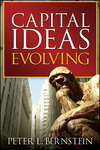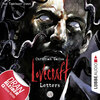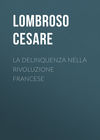Kitabı oku: «The Man of Genius», sayfa 16
Italy, for the rest, as I have shown in Tre Tribuni,352 has had, and idolized, for a brief quarter of an hour, two mattoids of considerable gifts, Coccapieller and Sbarbaro, who, in the midst of immoralities, trivialities, contradictions, and paradoxes, had a few traits of genius,353 explicable by a less degree of misoneism, and a greater facility in adopting new ideas.
Décadent Poets.– Some acquaintance with this new variety of literary madmen will explain to us the existence, in the seventeenth century, of the French précieux, and, at the present day, that of the Parnassiens, Symbolistes, and Décadents.
“I have read their verses,” says Lemaître,354 “and not even seen as much as the turkey in the fable, who, if he did not distinguish very well, at least saw something. I have been able to make nothing of these series of words, which – being connected together according to the laws of syntax – might be supposed to have some sense, and have none, and which spitefully keep your mind on the stretch in a vacuum, like a conundrum without an answer…
“ ‘En ta dentelle où n’est notoire
Mon doux évanouissement,
Taisons pour l’âtre sans histoire
Tel vœu de lèvres résumant.
Toute ombre hors d’un territoire
Se teinte itérativement
A la lueur exhalatoire
Des pétales de remuement.’…
“One of them, however, has explained to us what they intended doing, in a pamphlet modestly entitled, Traité du Verbe, by Stéphane Mallarmé. By this it appears that they have invented two things – the symbol, and ‘poetic instrumentation.’
“The invention of the symbolists seems to consist in not saying what feelings, thoughts, or states of mind they express by images. But even this is not new. A SYMBOL is, in short, an enlarged comparison of which only the second term is given – a connected series of metaphors. Briefly, the symbol is the old ‘allegory’ of our fathers.355
“Now, here is the second discovery made by our wild-eyed symbolists. Men have suspected, ever since Homer’s time, that there are relations, correspondences, affinities, between certain sounds, forms, and colours, and certain states of mind. For instance, it was felt that the repeated sound of a had something to do with the impression of freshness and peace produced by this line of Virgil —
“ ‘Pascitur in silva magna formosa juvenca.’
It was known that sounds may, like colours, be striking or subdued; like feelings, sad or joyful. But it was thought that these resemblances and relations are somewhat fugitive, having nothing constant or sharply-defined, and that they are, at least, hinted at by the sense of the words which compose the musical phrase.
“Now, attend to this! For these gentlemen, a = black, e = white, i = blue, o = red, u = yellow.
“Again, black = the organ, white = the harp, blue = the violin, red = the trumpet, yellow = the flute.
“Again, the organ expresses monotony, doubt, and simplicity; the harp, serenity; the violin, passion and prayer; the trumpet, glory and ovation; the flute, smiles and ingenuousness.
“It is difficult to make out to what degree the young symbolards still take account of the sense of words. That degree, however, is, in any case, very slight, and, for my part, I cannot well distinguish the passages where they are obscure from those where they are only unintelligible.
“In short, a poetry without thoughts, at once primitive and subtle, which does not (like classic poetry) express a connected series of ideas, nor (like the poetry of the Parnassiens) the physical world in its exact outlines, but states of mind in which we can scarcely distinguish ourselves from surrounding objects, where sensation is so closely united to sentiment; where the latter grows so rapidly and naturally out of the former, that it is quite sufficient for us to note down our sensations at random just as they present themselves, to express ipso facto the emotions which they successively give rise to in the mind.
“Do you understand?.. Neither do I. One would have to be drunk in order to understand this.”
I can only conceive that the poetry, an attempt to define which has here been made, could be that of a solitary, a nerve-sufferer, and almost a madman. This poetry thus flourishes on the borderland between reason and madness.
Yet these mattoids have their man of genius – Verlaine. Let us hear Lemaître on this subject: —
“I imagine he must be almost illiterate. He has a strange head – the profile of Socrates, an enormous forehead, a skull knobbed like a battered basin of thin copper. He is not civilized, he ignores all received codes of morality.
“One day he disappears. What has become of him? It would be in character for him to have been publicly cast out from regular society. I see him behind the grate of a prison, like François Villon – not for having, like him, become an accomplice of thieves and rogues, for the love of a free life, but rather for an error of over-sensitiveness – for having avenged (by an involuntary stab, given, as it were, in a dream) a love reprobated by the laws and customs of the modern and Western world. But, though socially degraded, he remains innocent. He repents as simply as he sinned – with a Catholic repentance, all terror and tenderness, without reasoning, without pride of intellect. In his conversion, as in his sin, he remains a purely emotional being…
“Then, it may be, a woman took pity on him, and he let himself be led like a little child. He reappears, but continues to live apart. No one has ever seen him on the Boulevards, or in a theatre, or at the Salon. He is somewhere at the other end of Paris, in the back-room of a wine-merchant’s shop, drinking blue wine. He is as far from us as if he were an innocent satyr in the great forests. When he is ill, or at the end of his resources, some doctor, whom he knew formerly, when in jail, gets him into the hospital; he stays there as long as he can and writes verses; he hears queer, sad songs whispered to him out of the folds of the cold white calico curtains. He is not a déclassé, for he never had a class. His case is rare and peculiar. He finds means to live, in a civilized society, as he could live in a state of the freest nature.
“It may be that he has sometimes felt for an instant the influence of some contemporary poets, but these have done nothing for him, save to awaken and reveal to him the extreme and painful sensibility which is his whole being. In the main, he is without a master. He moulds language at his will, not, like a great writer because he knows it, but, like a child, because he is ignorant of it. He gives wrong senses to words in his simplicity. Little as we might expect it, this poet, whom his disciples regard as such a consummate artist, writes on occasion (if we may dare to speak out), like a pupil of the technical schools, or a second-rate chemist subject to lyric outbursts. After this, it is amusing to see him while posing as the impeccable artist, the sculptor of strophes, the gentleman who distrusts imagination, write, with the keenest sense of enjoyment: —
“ ‘A nous qui ciselons les mots comme des coupes
Et qui faisons des vers émus très froidement…
Ce qu’il nous faut, à nous, c’est, aux lueurs des lampes,
La science conquise et le sommeil dompté.’
Yet this writer, so wanting in ordinary technical skill, has yet written – I cannot tell how – verses of a penetrating sweetness, a languid charm which is peculiarly his own, and which perhaps arises from a union of these things – charm of sound, clearness of feeling, and partial obscurity in the words. Thus, when he tells us that he is dreaming of an unknown woman, who loves him, who understands him, and weeps with him, he adds: —
“ ‘Son nom? Je me souviens qu’il est doux et sonore,
Comme ceux des aimés que la vie exila.
Son regard est pareil au regard des statues,
Et pour sa voix lointaine, et calme, et grave, elle a
L’inflexion des voix chères qui se sont tues.’
“I am also very fond of the Chanson d’Automne, though certain words (blême and suffocant) are not perhaps used with entire accuracy, and scarcely correspond with the “languor” described just before.
“Les sanglots longs
Des violons
De l’automne
Blessent mon cœur
D’une langueur
Monotone.
Tout suffocant
Et blême, quand
Sonne l’heure,
Je me souviens
Des jours anciens,
Et je pleure.
Et je m’en vais
Au voit mauvais
Qui m’emporte
De ça, de là,
Pareil à la
Feuille morte.’
“He celebrates the Virgin in an exceedingly fine hymn: —
“ ‘Je ne veux plus aimer que ma mère Marie.
…
Et, comme j’étais faible et bien méchant encore,
Aux mains lâches, les yeux éblouis des chemins,
Elle baissa mes yeux, et me joignit les mains
Et m’enseigna les mots par lesquels on adore.
…
Et tous ces bons efforts vers les croix et les claies,
Comme je l’invoquais, Elle en ceignit mes reins.’
“His piety inspires him with some very sweet lines: —
“ ‘Écoutez la chanson bien douce
Qui ne pleure que pour vous plaire.
Elle est discrète, elle est légère:
Un frisson d’eau sur de la mousse!..
Elle dit, la voix reconnue,
Que la bonté c’est notre vie,
Que de la haine et de l’envie
Rien ne reste, la mort venue…
Accueillez la voix qui persiste
Dans son naïf épithalame.
Allez, rien n’est meilleur à l’âme
Que de faire une âme moins triste!..
Je ne me souviens plus que du mal que j’ai fait.
Dans tous les mouvements bizarres de ma vie,
De mes “malheurs,” selon le moment et le lieu,
Des autres et de moi, de la route suivie,
Je n’ai rien retenu que la grâce de Dieu.’
“But, even in the Poëmes Saturniens, we already meet with pieces of an oddity difficult to define – pieces which seem to belong to a poet who is slightly mad, or perhaps to one who is only half awake, and whose brain is darkened by the fumes of his dreams, or of drink; so that external objects only appear to him through a mist, and the indolence of his memory prevents him from getting hold of the right words. Take this for an example: —
“ ‘La lune plaquait ses teintes de zinc
Par angles obtus;
Des bouts de fumée en forme de cinq
Sortaient drus et noirs des hauts toits pointus.
Le ciel était gris. La bise pleurait
Ainsi qu’un basson.
Au loin un matou frileux et discret
Miaulait d’étrange et grêle façon.
Moi, j’allais rêvant du divin Platon
Et de Phidias,
Et de Salamine et de Marathon,
Sous l’œil clignotant des bleus becs de gaz.’
“That is all. What is it? It is an impression – the impression of a gentleman who walks about the streets of Paris at night, and thinks about Plato and Salamis, and thinks it funny to think of Plato and Salamis ‘sous l’œil des becs de gaz.’ Why should it be funny? I cannot tell.
“ ‘Aimez donc la raison: que toujours vos écrits
Empruntent d’elle seule et leur lustre et leur prix.’
“One might almost say that Paul Verlaine is the only poet who has never expressed anything but sentiment and sensation, and has expressed them for himself, and for no one else,356 which dispenses him from the obligation of showing the connection between his ideas, since he knows it. This poet has never asked himself whether he should be understood, and he has never wished to prove anything. This is why (Sagesse excepted) it is almost impossible to give a résumé of his collections, or to state their main idea in a succinct form. One can only characterise them by means of the state of mind of which they are most frequently the rendering – semi-intoxication, hallucination which distorts objects, and makes them resemble an incoherent dream; uneasiness of the soul which, in the terror of this mystery, complains like a child; then languor, mystic sweetness, and a lulling of the mind to rest, in the Catholic conception of the universe accepted in all simplicity.
“There is something profoundly involuntary and illogical in the poetry of M. Paul Verlaine. He scarcely ever expresses movements of full consciousness or entire sanity. It is on this account, very often, that the meaning of his song is clear – if it is so at all – to himself alone. In the same way, his rhythms, are sometimes perceptible by no one but himself. I do not refer here to the interlaced feminine rhymes, alliterations, assonances within the line itself, of which none has made use more frequently or more successfully than he.
“But there are two sides to him. On one, he looks very artificial. He has an Ars Poetica of his own, which is entirely subtle and mysterious, and which, I think, he was very late in discovering: —
“ ‘De la musique avant toute chose,
Et pour cela préfère l’impair
Plus vague et plus soluble dans l’air,
Sans rien en lui qui pèse ou qui pose.
Il faut aussi que tu n’ailles point
Choisir tes mots sans quelque méprise:
Rien de plus cher que la chanson grise
Où l’indécis au précis se joint…
Car nous voulons la nuance encor,
Pas la couleur, rien que la nuance!
Oh! la nuance seule fiance
Le rêve au rêve, et la flute au cor…’
“On the other side, he is quite simple: —
“ ‘Je suis venu, calme orphelin,
Riche de mes seuls yeux tranquilles,
Vers les hommes des grandes villes:
Ils ne m’ont pas trouvé malin.’
“Or, elsewhere: —
“ ‘J’ai peur d’un baiser
Connue d’une abeille.
Je souffre et je veille
Sans me reposer,
J’ai peur d’un baiser.’ ”
Thus far Lemaître.
It will be seen that the décadents correspond exactly to the diagnosis of literary mattoids, in all their old vacuity, but with the appearance of novelty. At the same time, there are among them, real men of genius who – amid the (frequently atavistic) oddities of mattoidism – have struck an original note.
All these cases show us that the gradations and transitions between sanity and insanity are far from being as hypothetical as Livi asserts them to be. Moreover, all this is in perfect harmony with the eternal evolution which we see going on in the ample realm of nature, which, as has been well said, never proceeds by leaps, but by successive and gradual transformations.
Now, it is natural that, as these gradations exist in this very strange form of literary insanity, they should also be found in the forms of criminal insanity, and that, in consequence, many of those asserted to be guilty or mad, are only half responsible, although no human thought can trace the limits with entire certainty.
It is well to observe here, what a different appearance madness assumes, according to the age in which it occurs. Had Bosisio lived in the Middle Ages, or in Spain or Mexico at a later period, the kind-hearted liberator of birds, the martyr for posterity, would have become a St. Ignatius or a Torquemada – the Positivist atheist an ultra-Catholic, commanded by a cruel Deity to immolate human victims; but Bosisio was an Italian, living in 1870.
This case affords an excellent explanation of the occurrence, in remote times, and among savage or slightly civilized nations, of numerous outbreaks of epidemic insanity; and shows that many historical events may have been the result of mania on the part of one or more persons. Cases in point are those of the Anabaptists, the Flagellants, the witch-mania, the Taeping revolution.
Mental aberration gives rise in some men to ideas which, though bizarre, are sometimes gigantic and rendered more efficacious by a singular force of conviction, so as to sweep along the feeble-minded multitude, who are all the more attracted by any singularity in dress, attitudes or abstinence (which such disease alone can suggest and render possible), that these phenomena are made inexplicable to them (and therefore worthy of veneration) by their ignorance and barbarism. The ignorant man always adores what he cannot understand.
Our poor sufferer from hallucinations wanted nothing but a favourable epoch to impress his ideas on the multitude – neither muscular strength, nor a certain vigour of thought, nor extraordinary endurance under privations, nor disinterestedness, nor conviction. At another epoch, Italy would have found her Mahomet in Bosisio.
Mattoids in Art.– At the competition opened at Rome for designs for a proposed monument to Victor Emmanuel – the subject being an international one – mattoids came forward in crowds. In fact, we find, in Dossi’s curious book, not less than 39 out of 296 (13 per cent.), a number which would be raised to 25 per cent. if we add 38 more, who, in addition to their eccentricity, gave tokens of being imbecile.
The most general characteristic of these productions is their stupidity. One of them proposes a square stone box without a roof (similar to the “magnaneries” or roofless stone buildings used in the South of France for silkworms), which he calls a “Right Quadrangular Tower” – destined to receive the late king’s remains, and protect them against the inundations of the Tiber. Tr – ’s monument – “destined to live for centuries” – consists of a column surrounded by obelisks, by four flights of steps, and four triangles, each surrounded by twelve small spires. Each of the latter is to support a bust, each of the columns a statue of some great Italian; with regard to six statues, the artist reserves the right of changing them at the death of our illustrious men – Sella, Mamiani, &c. This is a case for saying, “Perish the astrologer!” Another competitor – two, in fact – have projected rooms to serve as public lavatories at the base of their columns. There is a curious coincidence and emulation of hatred in nearly all; most of them make use of celebrated monuments, whose destruction is, of course, a sine quâ non to the erection of theirs.
But, if wanting in every sign of genius, these designs are not deficient in allegorical symbols of the most grotesque type, or in inscriptions. Some of them, indeed, are nothing but a mass of irrelevant inscriptions, relating to everything in the world, except the poor Re Galantuomo himself – but more particularly to the supposed genius of the artist.
Here we find that the main characteristic of such minds – vanity, heightened to the point of disease – makes each of them think his own production a masterpiece. Canfora declares that he is “neither engineer nor architect, but inspired by God alone.” A. B. does not send in his design to the Committee, because it is too grand; and another ends by saying, “How mighty is the thought of the artist!”
Nearly all are absolutely ignorant of the art in which they claim to excel. Thus Dossi found among the projectors, teachers of mathematics and of grammar, doctors in medicine and in law, military men, accountants, and others who themselves asserted that they had never before handled pencil or compasses. At the same time, their far from humble social position bears out what I consider to be one of the principal points: viz., that we have before us (as might be suspected) idiots, or persons actually insane, but men quite respectable outside their special artistic mania. Such should be M – , a member of the Russian Archæological Society, of the Hellenic Syllage, Architect-in-chief of Roumelia and the palaces of the Sultan, Knight and Commander of various Orders, &c., &c.
When we compare these stupid abortions with the pictures inspired by insanity (I am not now speaking of those painters who, like various poets and musicians, in losing their reason, lost artistically more than they gained – especially in right proportion and the harmony of colour), we shall often find the absurd and disproportionate; but also, at the same time, a true, even excessive originality, mingled with a savage beauty sui generis, which, up to a certain point, recalls the masterpieces of mediæval, and, still more, of Chinese and Japanese, art, so extraordinarily rich in symbols. We shall see, in short, that art suffers here, not from a defect, but from an excess of genius, which ends by crushing itself.
In conclusion, it is very evident that the insane artist is as superior to the mattoid in the practice of his art, as he is inferior to him in practical life; that, in short, in the region of art, the mattoid approaches nearest to the imbecile, and the lunatic to the man of genius.
CHAPTER IV.
Political and Religious Lunatics and Mattoids
Part played by the insane in the progressive movements of humanity – Examples – Probable causes – Religious epidemics of the Middle Ages – Francis of Assisi – Luther – Savonarola – Cola da Rienzi – San Juan de Dios – Campanella – Prosper Enfantin – Lazzaretti – Passanante – Guiteau – South Americans.
ALL this helps us to understand why the great progressive movements of nations, in politics and religion, have so often been brought about, or at least determined, by insane or half-insane persons. The reason is that in these alone is to be found, coupled with originality (which is the special characteristic of the genius and the lunatic, and still more of those who partake of the character of both), the exaltation capable of generating a sufficient amount of altruism to sacrifice their own interests, and their lives, for the sake of making known the new truths, and, often, of getting them accepted by a public to which innovations are always unwelcome, and which frequently takes a bloody revenge on the innovator.
“Such persons,” says Maudsley, “are apt to seize on and pursue the bypaths of thought, which have been overlooked by more stable intellects, and so, by throwing a side-light on things, to discover unthought-of relations. One observes this tendency of mind even in those of them who have no particular genius or talent; for they have a novel way of looking at things, do not run in the common groove of action, or follow the ordinary routine of thought and feeling, but discover in their remarks a certain originality and perhaps singularity, sometimes at a very early period of life.
“Notable, again, is the emancipated way in which some of them discuss, as if they were problems of mechanics, objects or events round which the associations of ideas and feelings have thrown a glamour of conventional sentiment. In regard to most beliefs, they are usually more or less heterodox or heretical, though not often constant, being apt to swing round suddenly from one point to a quite opposite point of the compass of belief… Inspired with strong faith in the opinions which they adopt, they exhibit much zeal and energy in the propagation of them.”357 They are careless of every obstacle, and untroubled by the doubts which arise in the minds of calm and sceptical thinkers. Thus they are frequently social or religious reformers.
It should be understood that they do not create anything, but only give a direction to the latest movements prepared by time and circumstances, as also – thanks to their passion for novelty and originality – they are nearly always inspired by the latest discoveries or innovations, and use these as their starting-point in guessing at the future.
Thus Schopenhauer wrote at an epoch in which pessimism was beginning to be fashionable, together with mysticism, and only fused the whole into one philosophic system. Cæsar found the ground prepared for him by the Tribunes.
When, says Taine, a new civilization produces a new art, there are ten men of talent who express the idea of the public and group themselves round one man of genius who gives it actuality; thus De Castro, Moreto, Lopez de la Vega, round Calderon; Van Dyck, Jordaens, De Vos, and Snyders round Rubens.
Luther summed up in himself the ideas of many of his contemporaries and predecessors; it is sufficient to mention Savonarola.
The spherical shape of the earth had already been maintained by St. Thomas Aquinas, and by Dante, before the discoveries of Columbus, which are also antedated by those of the Canary Islands, Iceland, and Cape Verde.
If the new ideas are too divergent from prevalent popular opinion, or too self-evidently absurd, they die out with their author, if, indeed, they do not involve him in their fall.
Arnold of Brescia, Knutzen,358 Campanella, tried to shake off the dominion of the clergy, and take away the temporal power of the Pope; they were persecuted and crushed.
“The insane person,” says Maudsley, “is in a minority of one in his opinion, and so, at first, is the reformer, the difference being that the reformer’s belief is an advance on the received system of thought, and so, in time, gets acceptance, while the belief of the former, being opposed to the common sense of mankind, gains no acceptance, but dies out with its possessor, or with the few foolish persons whom it has infected.”359
Of late years there has arisen in India, owing to the efforts of Keshub Chunder Sen, a new religion which deifies modern rationalism and scepticism; but here, also, the madness of Keshub evidently outran the march of the times; for the triumph of a similar religion is not probable, even among us, with our much greater progress in knowledge. Thus, too, Buddhism, finding the ground contested by the caste system in India, took no firm hold there, while it extended itself in China and Tibet. Keshub was induced to take up this line of action by a form of madness analogous to that which we shall also see in B – of Modena. In fact, this strange rationalist believes in revelation, and in 1879 he declaimed, “I am the inspired prophet,” &c.360
The same thing may be said of politics. Historical revolutions are never lasting, unless the way has been prepared for them by a long series of events. But the crisis is often precipitated – sometimes many years before its time – by the unbalanced geniuses who outrun the course of events, foresee the development of intermediate facts which escape the common eye, and rush, without a thought of themselves, on the opposition of their contemporaries, acting like those insects which, in flying from one flower to another, transport the pollen which would otherwise have required violent winds, or a long space of time to render it available for fertilization.
Now, if we add the immovable, fanatical conviction of the madman to the calculating sagacity of genius, we shall have a force capable, in any age, of acting as a lever on the torpid masses, struck dumb before this phenomenon, which appears strange and rare even to calm thinkers and spectators at a distance. Add further, the influence which madness, in itself, already has over barbarous peoples at early periods, and we may well call the force an irresistible one.
The importance of the madman among savages, and the semi-barbarous peoples of ancient times, is rather historical than pathological. He is feared and adored by the masses, and often rules them. In India, some madmen are held in high esteem, and consulted by the Brahmins – a custom of which many sects bear traces. In ancient India the eight kinds of demonomania bore the names of the eight principal Indian divinities; the Yakshia-graha have deep intelligence; the Deva-graha are strong, intelligent, and esteemed and consulted by the Brahmins; the Gandharva-graha serve as choristers to the gods. But, in order to know what a point the veneration of the insane may reach, and how little modern India has changed in this respect, it is quite sufficient to observe that there exist at present in that country 43 sects which show particular zeal towards their divinity, sometimes by drinking urine, sometimes by walking on the points of sharp stones, sometimes by remaining motionless for years exposed to the rays of the sun, or by representing to their own imagination the corporeal image of the god, and offering up to him, also in imagination, prayers, flowers, or food.361
The existence of endemic insanity among the ancient Hebrews (and, by parity of reasoning, among their congeners, the Phœnicians, Carthaginians, &c. – the same words being used for prophet, madman, and wicked man) is proved by history and language. The Bible relates that David, fearing that he would be killed, feigned madness,362 and that Achish said, “Have I need of madmen that ye have brought this fellow to play the madman in my presence?” This passage is evidence of their abundance, and also of their inviolability, which was certainly owing to the belief, still common among the Arabs, which causes the word nabi (prophet) to be constantly used in the Bible in the sense of madman, and vice versa. Saul, even before his coronation, was suddenly seized with the prophetic spirit, so much to the surprise of the bystanders that the event was made the occasion of a proverb – “Is Saul also among the prophets?” One day, after he had become king, the spirit of an evil deity weighed upon him, and he prophesied (here raged) in the house, and attempted to transfix David with a lance.363 In Jeremiah xxix. 26, we read “The Lord hath made thee priest, … for every man that is mad and maketh himself a prophet, that thou shouldst put him in prison and in the stocks.” In 1 Kings xviii. we see the prophets of the groves, and of Baal crying out like madmen, and cutting their flesh. In the First Book of Samuel we find Saul as a prophet rushing naked through the fields.364 Elsewhere we see prophets publicly approaching places of ill-fame, cutting their hands, eating filth, &c. The Medjdub of the Arab, and the Persian Davana are the modern analogues.365
“Medjdubim,” says Berbrugger, “is the name given to these individuals who, under the influence of special circumstances fall into a state which exactly recalls that of the Convulsionnaires of St. Medard. They are numerous in Algeria, where they are better known under the names of Aïssawah or Ammarim.” Mula Ahmed, in the narrative of his journey (translated by Berbrugger) speaks of “Sidi Abdullah, the Medjdub, who brought the best influence to bear on the Hammis, his thievish and vicious fellow-citizens. He would remain for three or five days like a log, without eating, drinking, or praying. He could do without sleep for forty days at the end of which, he was seized with violent convulsions” (p. 278). Further on, he speaks of one Sidi Abd-el-Kadr, who wandered from place to place, forgetful of himself and his family – an indifference probably due to his sainthood. Drummond Hay shows us how far respect for the insane is carried in Morocco, and among the neighbouring nomadic tribes: “The Moor tells us that God has retained their reason in heaven, whilst their body is upon earth; and that when madmen or idiots speak, their reason is, for the time, permitted to return to them, and that their words should be treasured up as those of inspired persons.”366
“Parliamentary systems do not work well, since they do not allow of the best being at the top, and nonentities at the bottom” (Forche, 3). This, however, is borrowed from Machiavelli’s Decades.
“If you call me a malcontent,” he said to the Council of Public Instruction, “you do me honour: progress is due to rebels and malcontents. Christ Himself was a rebel and an agitator.”











